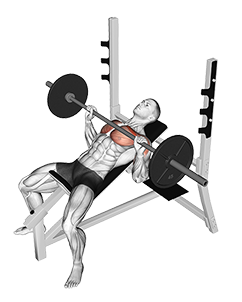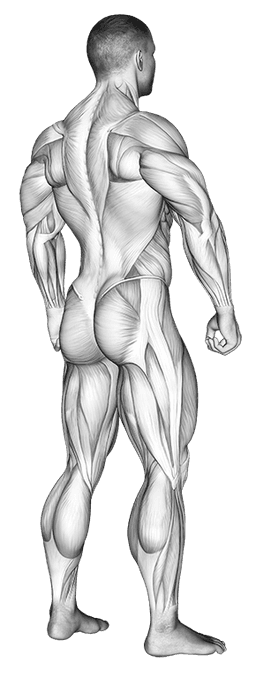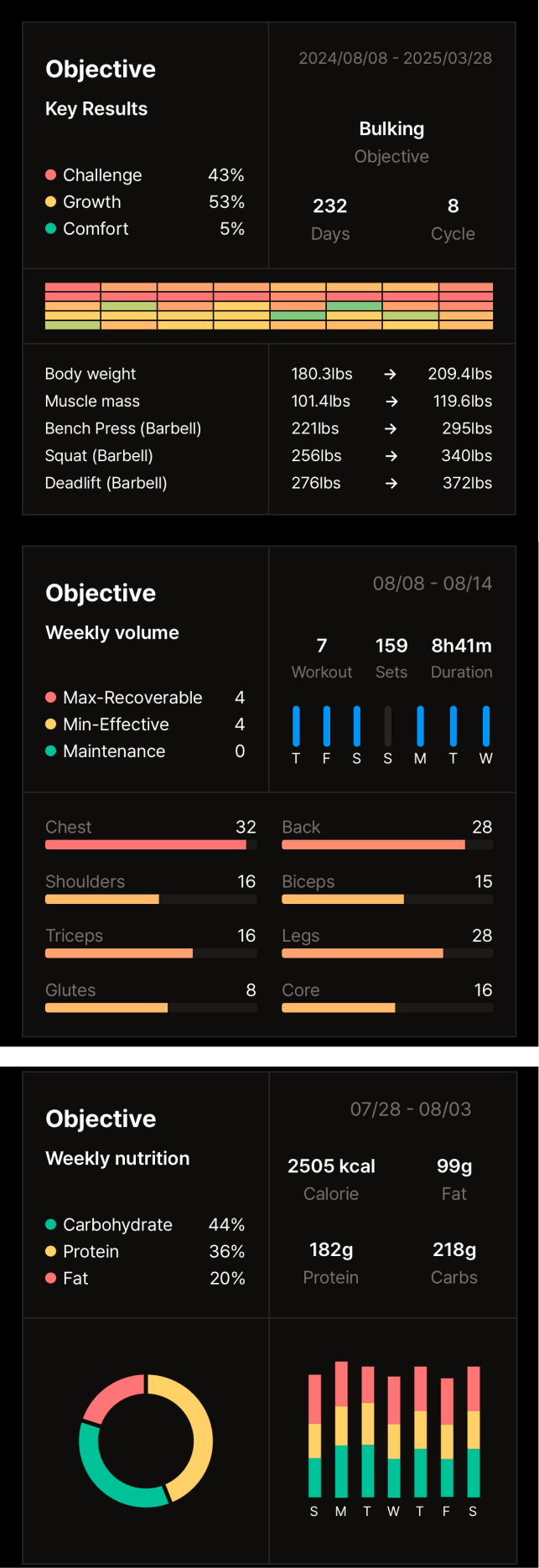
Incline Bench Press (Barbell)
A compound exercise that targets the upper chest muscles while also engaging the shoulders and triceps. It's a great way to build chest strength and size.
Muscle Targets Visualizer
Muscle Targeting Visualizer



Primary Muscle
Secondary Muscles
Strength Level Tracker
Track Your Progress Like a Pro
Incline Bench Press (Barbell)
Average of all records in a cycle
Step-by-Step Instructions
1. Setup
Lie on an incline bench with your feet flat on the floor and your back firmly against the bench. Adjust the incline to your preference (30-45 degrees is common). Grab the barbell with an overhand grip slightly wider than shoulder-width apart.
- Ensure a stable base
- Grip should be firm but not tense
2. Unrack the Barbell
Unrack the barbell, maintaining a controlled movement and keeping your back flat against the bench. Lower the bar slowly until it touches your upper chest.
- Keep your shoulders engaged
- Maintain control of the barbell at all times
3. Press the Barbell
Press the barbell upwards until your arms are fully extended, but avoid locking your elbows completely. Throughout the lift, maintain a steady rhythm and breath control.
- Exhale during the pressing phase
- Avoid jerky movements
4. Controlled Descent
Slowly lower the barbell back down to your upper chest, resisting gravity. Avoid letting the weight drop rapidly.
- Inhale during the lowering phase
- Maintain tension in your chest muscles
5. Repetition
Repeat the movement for the desired number of repetitions. Focus on proper form and controlled movements throughout each rep.
- Maintain consistent depth
- Focus on controlled movements
6. Rack the Barbell
Once you have finished your set, carefully return the barbell to the rack.
- Use controlled movements
- Maintain a stable base
Form Tips
✓Maintain a stable base
Keep your feet firmly planted on the floor and your back flat against the bench to maintain stability and prevent injury.
✓Proper grip width
Adjust your grip width to find the most comfortable and effective position, typically slightly wider than shoulder-width apart. A too-wide or too-narrow grip can strain your shoulders or reduce muscle activation.
✓Controlled movement
Avoid jerky movements. Keep each movement under control, smoothly lowering and raising the weight with even effort throughout the repetition.
✓Full range of motion
Ensure you are lowering the barbell until it gently touches your upper chest, activating the chest muscles completely. Do not restrict the range of motion.
✓Breathe properly
Inhale as you lower the weight and exhale as you press it upward.
Common Mistakes
Arching the back
Focus on keeping your back flat against the bench throughout the exercise. This helps protect your spine and ensures optimal muscle activation.
Flared elbows
Keep your elbows tucked in slightly towards your body. This helps to target your chest muscles more effectively.
Incompletely lowering the bar
Make sure to lower the barbell until it touches your upper chest. This ensures full range of motion.
Using excessive weight
Start with a lighter weight to ensure proper form and gradually increase the weight as you get stronger.
Bouncing the bar off the chest
Maintain control throughout the entire movement. Avoid bouncing the weight off your chest, as this can reduce muscle activation and increase the risk of injury.
Alternative Exercises
- Close Grip Incline Bench Press
- Incline Dumbbell Bench Press
- Incline Smith Machine Bench Press
- Incline Hammer Strength Bench Press
Complementary Exercises
- Incline Dumbbell Flyes
- Incline Cable Flyes
- Overhead Press
- Front Raises

